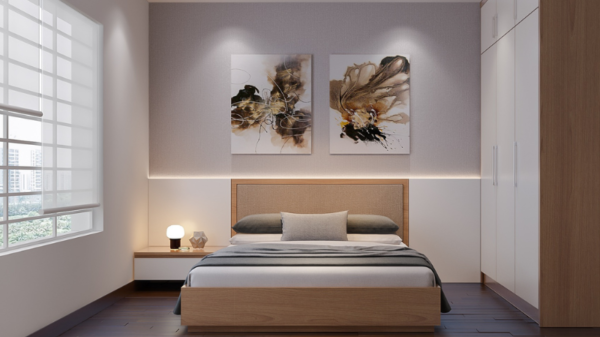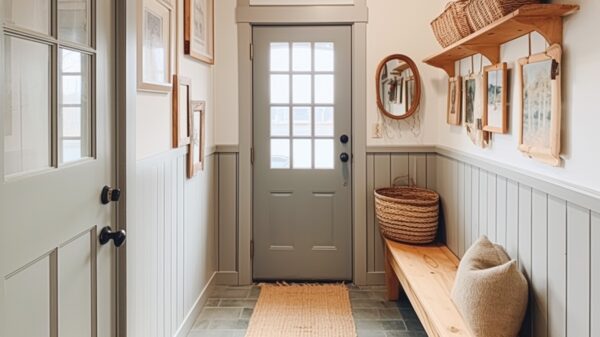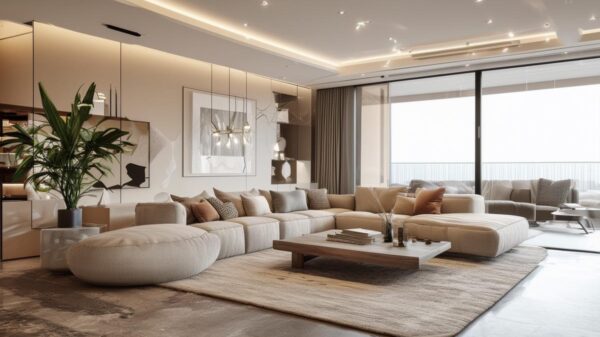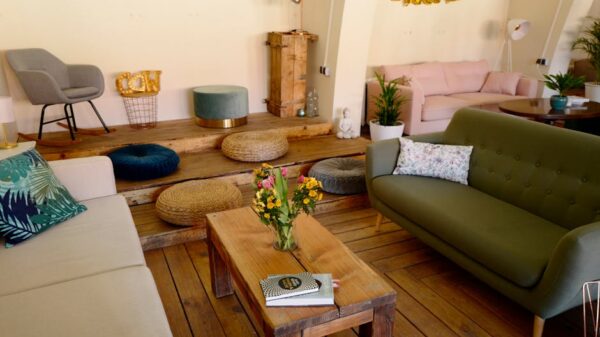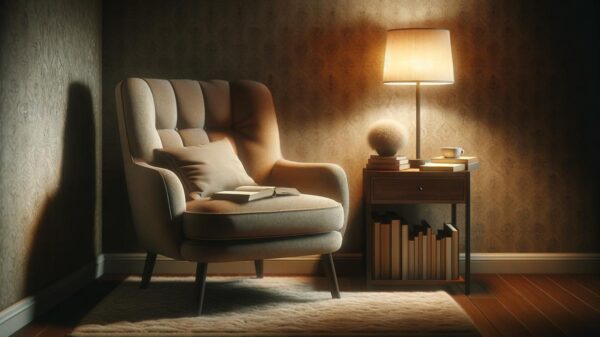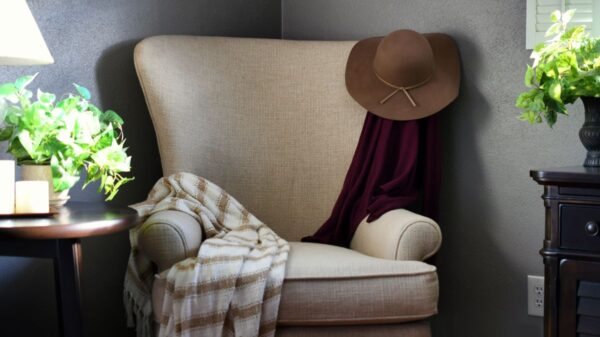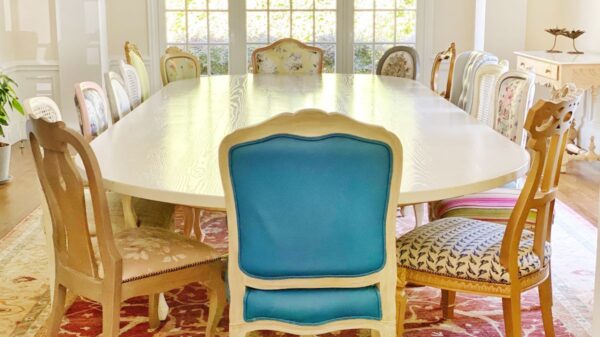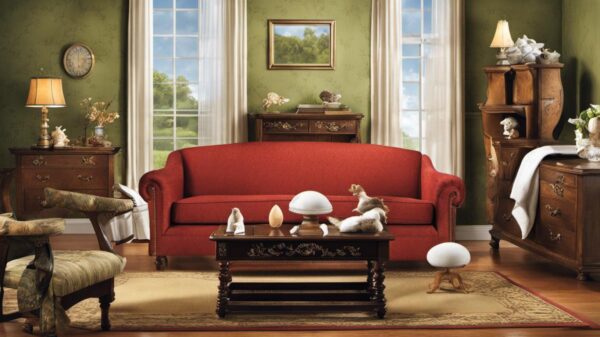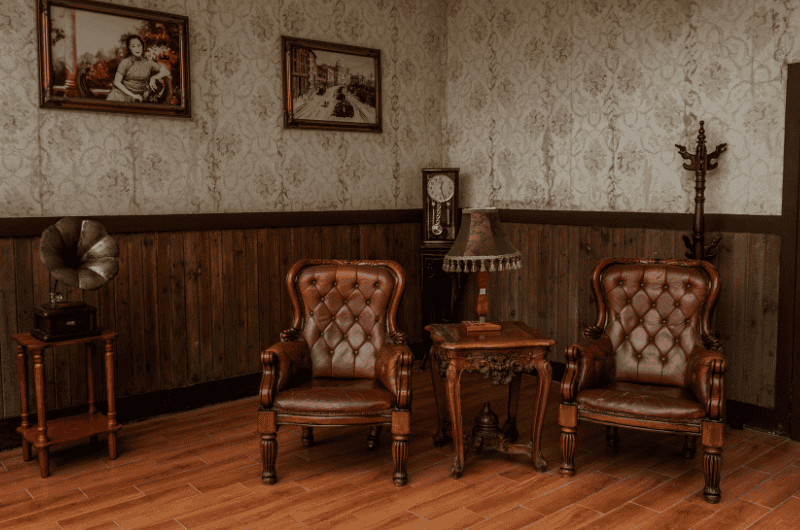Antique Home Furniture: A Comprehensive Guide
The rich tapestry of the past unravels in the form of antique home furniture, with every nook and cranny telling a story. Embarking on an informative journey, the evolution of this cherished décor unfolds, tracing stellar influences from various eras, and reflecting cultural aesthetics and historical significance. As we weave through various topics such as historical relevance, common design styles, restoration methods, and investment potential, a greater understanding of antique furniture’s role and value in our homes is amplified. So please join in, as we revel in antique home furniture: a comprehensive guide.
The Evolution of Antique Home Furniture
A Stroll Down Memory Lane: The Transformative Journey of Antique Home Furniture
Once the sole domain of dusty attics and grandparent’s homes, antique home furniture has captured the collective imagination today, shaping our perception and influencing modern design. The story of its evolution is as multifaceted as the carvings on an 18th-century Chippendale chest of drawers. The journey of antique home furniture dates back to the time when human civilization decided to settle down. The prehistoric furniture, mainly stone, isn’t what we typically visualize when we think of ‘antique.’ It was far from the elegant Victorian Era styles or the artisan craftsmanship of the Georgian period. These bulky stone prototypes laid the foundation for the journey ahead.
As society became more sophisticated, so too did the furniture, evolving hand in hand with advancements in technology, material innovations, and economic conditions. The ancient Greeks and Romans gave us the concept of luxury in furniture, beds and couches wrought in bronze, silver, or gold, accented with plush pillows. These pieces alluded to wealth, rank, and grandeur. Influenced by these classical design disciplines, European periods such as the 17th Century Jacobean, famous for its sturdy oak furniture, the charming simplicity of the 18th Century Queen Anne style, or the robust and elegant Georgian era were born. This timeline lays the groundwork for the fascinating variety found in antique home furniture today.

The Industrial Revolution
This time heralded a radical shift, dramatically affecting furniture manufacturing. Mechanized production brought well-crafted furniture into middle-class homes, making comfort and style more widely accessible. Concurrently, designers like Chippendale, Sheraton, and Hepplewhite were leaving their indelible signatures on the styles of their time.
Fast forward to the 20th century, where the emphasis skewed towards functionality and simplicity, making way for the advent of styles like Modern, Scandinavian, and Mid-century Modern. But our fascination with antique home furniture endured and even surged.
Why? The charm, often ineffable, arises from a mixture of their unique aesthetic, historical significance, quality of crafting, and nostalgic appeal. But more compellingly, each piece tells a story, a silent witness to the shifting sands of time, societal norms, and human creativity.
Today, the resurgence in popularity of antique home furniture is not simply a trend but rather indicates a deeper appreciation for the past. There’s been a dramatic shift from viewing these pieces merely as dated relics to things of beauty, objects that tell tales of a bygone era. This evolving perception has shaped the interior design landscape, inspiring the creation of modern pieces that mirror the elegance, durability, and timelessness of classic antique styles.
Whether it’s a charming rustic farmhouse table or a lavishly ornate Rococo mirror, antique home furniture offers a tangible link to our past and a treasure trove of design inspirations that continue to shape our present and future home decor choices. The story of antique home furniture is not just a historical evolution, but the reflection of our ceaseless quest for beauty, comfort, and identity in the spaces we inhabit.
Meaning and Value in Antique Furniture
Peering into the world of antique furniture, beyond the realms of aesthetic beauty and heuristic value, reveals a whole frontier of intrinsic worth.
From ornate 17th-century Davenports to simple Shaker tables, each piece of antique furniture tells a story far richer than any price tag. There is a unique gratification in cherishing a piece of history like antique furniture. Owning and caring for a piece of antique furniture resonates with the human desire to preserve and honor our past.
Collecting antique furniture is indeed, a tactile way to commune with history. It’s about cherishing the artisanship and detailing that’s absent in modern, mass-produced furniture. Each hand-carved dent, each worn-out knob embraces stories of a time we exist only in books and portraiture. In the realm of sustainability, antique furniture throws a trump card. Built to last, their robust make-up defies the ethos of disposable culture, providing a practical pathway to more sustainable living. By purchasing antique furniture, individuals contribute to the reduction of deforestation and the waste of resources associated with the mass production of new furniture. It perpetuates a cyclic economy and promotes the conservation of resources.
Antique Furniture And Society
Walking through the lens of a sociocultural perspective, antique furniture marks the evolution of societal norms and values. They are the milestones on the timeline of human experience, symbolizing the transitions in societal status, wealth, politics, and even gender dynamics. The evolution from intricate, heavily embellished furniture of the aristocracy to sleek, minimalistic styles indicates the shift from power and extravagance to functionality and simplicity.
Antique furniture, being witnesses of bygone eras, enhances the emotional connection of individuals with their lineage. It creates a sense of nostalgia, remembering times when families gathered around an old oak dining table or when grandparents rocked in a sturdy pine chair. These pieces, therefore, possess more than aesthetic value; they hold a piece of our hearts and identities, preserved in wood.
How Antique Furniture Shapes Culture
Another intangible value that antique furniture presents is its potential for education. The diverse range of styles and designs offers plentiful learning opportunities – a doorway to understanding past cultures, societies, and craftsmanship. It fosters an appreciation for diversity and ignites creative thinking, stimulating a personal and intimate relationship with our past.
In the domains of interior design and architecture, antique furniture’s relevance cannot be understated. Their unique, often rare designs serve as a rich source of inspiration and complexity to modern designs. They provide a distinct aesthetic contrast, adding an element of surprise and character to contemporary settings. In essence, the intrinsic worth of antique furniture reaches far beyond its monetary value.
It’s about cherishing aesthetic longevity, embracing sustainability, understanding socio-cultural evolutions, reconnecting with our roots, and fueling our quest for intellectual achievement. It’s about preserving the essence of our past and delivering it to future generations.

Common Antique Home Furniture Styles
One of the thrills of exploring antique home furniture is discovering the multitude of styles that have come to life throughout different historical periods. Let’s discuss common styles witnessed in antique furniture and how they can be distinguished from one another.
Victorian Style (1837-1901)
This era, named after Queen Victoria’s reign, exudes opulence and romance. Furniture from the Victorian period is often garnished with exuberant designs, intricate carvings, and dark woods such as mahogany and walnut. Gothic and Rococo inspirations also pervade this style, evident in curved lines, floral motifs, and marble tops.
Arts and Crafts/Mission Style (1880-1910)
In stark contrast to the lavish Victorian era, the Arts and Crafts movement prioritized simplicity, craftsmanship, and function. This style, also known as Mission, showcases sturdy construction with clean lines, often seen in oak furniture. Inlays of copper, pewter, or exotic woods highlight the skill of the craftsman.
Art Nouveau (1890-1910)
As a backlash against the mass-produced furniture of the industrial age, Art Nouveau is characterized by asymmetrical shapes and natural designs—a wonderful, whimsical blend of elegance and fantasy. Expect to see sinuous lines and motifs from nature, such as flowers, birds, and insects in this style.
Art Deco (1920-1940)
Inspired by the optimism of the Roaring Twenties, the Art Deco style embraces bold geometric patterns, contrasting materials, and smooth polished surfaces. Typical features include exotic woods, chrome, glass, and mirrored accents.
Country (18th-19th century)
This style captures the warmth and charm of rustic living. Functionality and practicality guide the design, with pieces typically made from local woods such as pine, oak, or maple. Expect to see natural finishes and simple, sturdy construction without excessive ornamentation.
Regency (1811-1820)
With its elegant, neoclassical design, Regency furniture radiates grace and sophistication. The style blends Greek, Roman, and Egyptian influences with dark woods, often highlighted by brass or gilt detailing.
American Empire (1800-1840)
Inspired by the French Empire style, this American iteration is characterized by bold, heavy shapes and an emphasis on symmetry. Mahogany was commonly used, with features including animal paw feet and the use of columns and pedestals.
By studying these styles and their unique features, anyone can increase their knowledge and appreciation of antique home furniture. Understanding these periods and their distinct characteristics not only aids individuals in identifying different types of furniture but also deepens their appreciation for the history and craftsmanship reflected in each piece. So, whether it’s finding that perfect Victorian accent chair or falling in love with a simple Arts and Crafts bookcase, the world of antique home furniture is truly a treasure trove waiting to be explored.
Restoration and Maintenance of Antique Furniture
While understanding the history and significance of antique furniture is vital, knowing how to restore and preserve these pieces secures their allure for generations to come.
Outfitting your home with antique furniture is not only about aesthetic pleasure. It’s about stewardship of a tangible piece of history. However, to ensure these pieces withstood the harsh treatment of time, you’d need to employ proven techniques of restoration and preservation. Restoration does not mean stripping the furniture of its venerability. It’s a conservative approach to keep the age-old charm alive. Remember, over-restoration can devalue a piece. Before embarking on any restoration project, it’s necessary to ascertain if a piece truly requires restoration or if cleaning would suffice. Furniture Restoration might involve reversing previous alterations, stabilizing current conditions to curtail further deterioration, replacing missing parts, or polishing the original finish. If it’s an instance of minor wear such as scuffs, minor stains, or superficial scratches, rubbing it out with a wood cleaner might do the trick. If the veneer is bubbled or cracked, a veneer repair might be within the do-it-yourself realm, but serious repair requires a professional.
Common repair processes include re-gluing loose joinery, mending broken parts, or patching up holes with same-kind wood filler. It might even ask for wood-turning or carving to replace the missing spindle or finial. Remember, replacement pieces should match the antique’s age, grain, and color. Using modern brass or screws for repair can devalue the antique.
Placement Of Antique Home Furniture
Their placement at home matters too. Too much light, heat, or coolant can degrade their character. Keep them away from windows, vents, or fireplaces. A heavy downy duster can protect them from scratches. Consider regional climate. High humidity can cause mold growth, and too dry environment can crack the wood. Wooden pieces require a humidity level of 40% to 50%. This can be managed by the use of a humidifier or dehumidifier. If pests are a problem, opting for professional fumigation could be the solution.
Preservation also means not subjecting them to harsh chemicals. Everyday household cleaners might be too strong for the delicate wood finish. A mild soap-water blend can be your safest bet.
Numerous resources online and offline can aid an antique hobbyist in learning about restoration and preservation, including books, tutorials, and local workshops. It’d also be wise to seek professional consultation when unsure. It’s about cherishing history, wisdom, and artistry ensconced within these precious relics.
Restoration and preservation of antiques is not just about reviving beauty. It’s about reaching back through time to touch the vibrant life and unrivaled expertise of the craftsmen who designed and created these timeless pieces. Successfully done, it ensures glimpses of a monumental past remain alive, warming modern homes and hearts. It’s a shared love, a nourished hobby, and a remarkable journey through time.
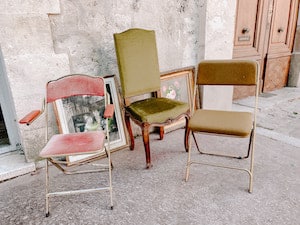
Investing in Antique Home Furniture
Starting a collection of antique furniture is a rewarding experience, offering a mix of intrigue, aesthetic charm, and cultural preservation. This venture requires knowledge, patience, and a love for history and artistry. It’s not merely acquiring items; it’s about owning a piece of the past and preserving it for future generations. For anyone considering this hobby, understanding the appeal and benefits of antiquity is vital. Antique furniture serves as an emblem of time, brimming with stories and craftsmanship that has survived generations. Aside from the ornamental allure, it offers sustainability by recycling old pieces, reducing demand for new timber, and expenditure on modern furniture. With mightier construction and superior materials, these remnants of history promise longer durability and timeless appeal.
- To start the collection, the focus should be more on personal interest rather than monetary appreciation. Choosing a style that resonates with your taste or evokes a particular emotion can enhance overall satisfaction. Research into different historical eras will introduce you to coveted styles such as Victorian, Art Nouveau, or Arts and Crafts. This understanding can also discern original artifacts from the reproductions.
- When seeking pieces for your collection, the marketplace for antique furniture extends beyond auctions and dealers. Flea markets, garage sales, and online websites can harbor hidden treasures at affordable prices. Evaluating the furniture’s age and authenticity is crucial, which can be identified through marks, labels, craftsmanship style, and patina. Scrutinize each potential acquisition. Look under, over, and inside the piece. Drawers, chairs, and tables should be sturdy. Remember condition holds significance.
- The thrill of the hunt is one part of the collector’s journey, but it doesn’t end there. It’s important to remember these precious items have stood the test of time and now require care and preservation to continue their story. While your love for the piece might tempt you towards immediate restoration, consider if the item merely needs a deep cleaning. Over-restoration can depreciate the value of your furniture, stripping away essential patina and character. If restoration is indeed required, seek help from an expert or educate yourself on the right techniques to ensure you’re preserving and not damaging the piece. Cleaning and restoration products should always be tested on a small, unseen area first!
- The placement of your collected furniture requires careful consideration. Sunlight can fade colors and cause wood to shrink, while changes in temperature and humidity can provoke warping and cracking. The use of natural cleaning products and conservative methods ensure the longevity and beauty of your items.
To grow as a collector, connect with other enthusiasts. Join collector clubs and online communities to share insights, discuss collections, and learn. Antique furniture collecting is an endless learning process. Engage in seminars, watch documentaries, and read books to stay informed and inspired. As an antique collector, you’re not just buying furniture, you’re investing in a tangible piece of history. It’s about preserving the past and celebrating the intrinsic beauty of old-world craftsmanship. Whether you’re a history buff or someone who appreciates vintage aesthetics, starting an antique furniture collection provides immense joy and satisfaction, enhanced each time a new piece is added to the collection. The journey of delving into the past, paired with the diligence of maintenance, and the thrill of discovery create a deeply enriching hobby that augments the aura of your living space.
Conclusion
As our comprehensive guide to antique home furniture comes to a close, we invite you to keep learning on your own. Having a knowledge and appreciation of these fine pieces of history can enrich one’s life. Furthermore, possessing an antique piece of furniture is akin to owning a piece of history, with the added joy of finding, restoring, and preserving such precious items. As we leave the world of common antique designs, take with you the understanding that these timeless pieces go beyond mere aesthetics, entailing a rich history, meticulous craftsmanship, and an intrinsic sense of value. For those keen on investing, bear in mind the guidance offered, ensuring that you navigate the potentially rewarding, yet precarious world of antique investing with greater discernment and knowledge.



